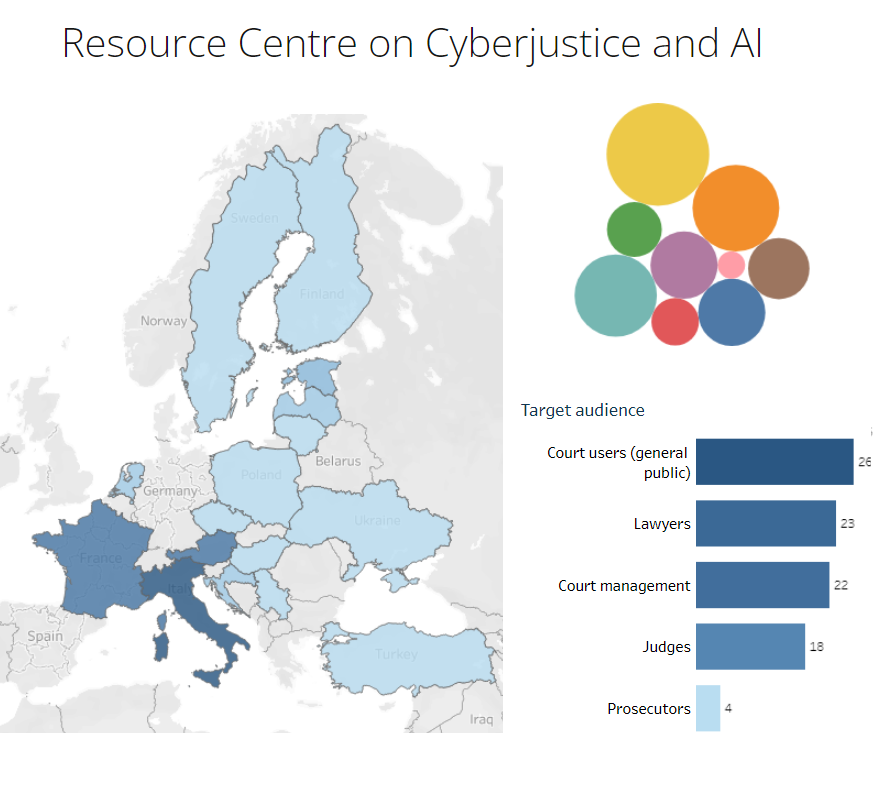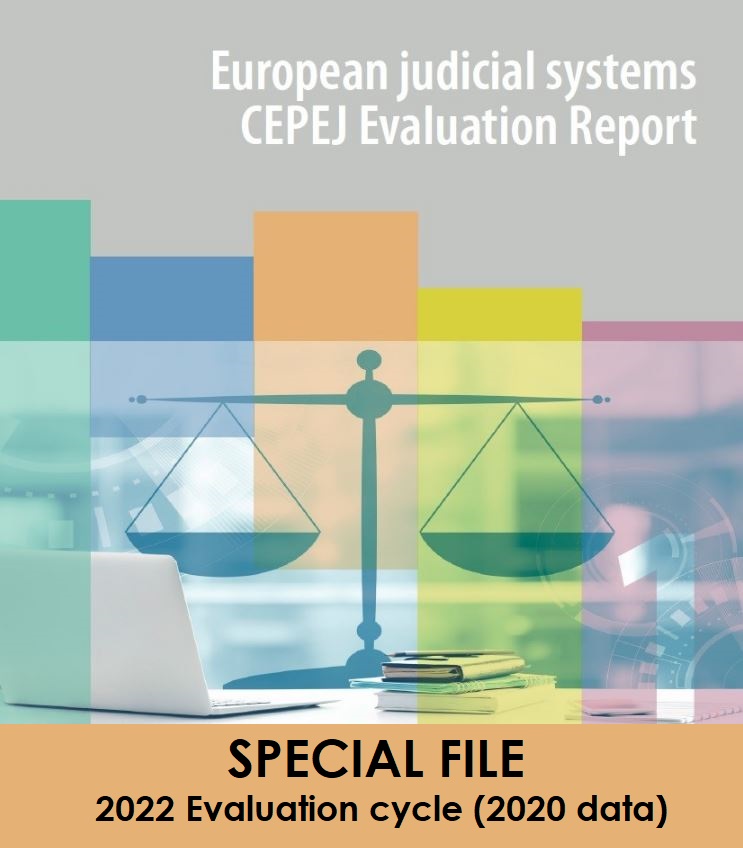Towards a better evaluation of the results of judicial reforms in the Western Balkans – “Dashboard Western Balkans“

2019 – 2022 / 2023 – 2026
Context of the Action

This Action is implemented in the framework of the Horizontal Facility III (2023 - 2026), a co-operation initiative of the European Union and Council of Europe for the Western Balkans and Türkiye. The Horizontal Facility III enables the beneficiaries to meet their reform agendas in the fields of human rights, rule of law and democracy and to comply with the European standards. It is funded by the European Union and the Council of Europe and implemented by the Council of Europe. It builds upon the results and progress achieved under the first phase of the programme, implemented in the period 2019 - 2022.
Objectives of the Action
The overall objective is to reach a better measurement of the results of the judicial reforms conducted by the beneficiaries (Albania, Bosnia and Herzegovina, Montenegro, North Macedonia, Serbia, and Kosovo*) to allow them to base their future policies and budget allocations on the CEPEJ findings to address outstanding steps needed to complete their reforms and improve the quality, efficiency and/or accountability of their justice system in line with European standards. To this end, the Action will support the annual collection and processing of data on the functioning of the judicial systems of the beneficiaries and provide and implement tailor-made technical expertise and capacity building activities designed from the results of the data collection.
_____________________
* This designation is without prejudice to positions on status, and is in line with UNSCR 1244 and the ICJ Opinion on the Kosovo Declaration of Independence.
Expected results
- Improved mechanisms of collection, processing and analysis of judicial data in accordance with CEPEJ standards and tools with the beneficiaries;
- Strengthened capacity to identify the strengths and weaknesses of the judicial system and measure the results of the judicial reforms within the beneficiaries.
Methodology of data collection
The CEPEJ collects annually data of the preceding year on the functioning of the justice system in each beneficiary. The methodology for the collection and quality check of data used by the CEPEJ in Evaluation cycles apply to this exercise. Each beneficiary appoints a Dashboard correspondent entrusted with the collection and coordination of the replies to the CEPEJ Dashboard Questionnaire, through the electronic system: CEPEJ-COLLECT. This correspondent is the unique interlocutor of the CEPEJ Secretariat during the whole process. The CEPEJ Questionnaire contains questions from the general CEPEJ evaluation cycles, and some additional questions specific for this Action, some defined in liaison with the Group of States against Corruption (GRECO), the European Court of Human Rights (ECHR) and the Department for the execution of Judgments of the European Court of Human Rights. The CEPEJ Dashboard Questionnaire is accompanied by an explanatory note to ensure comparability of data collected through this process. Extensive work is carried out by the Action team responsible for the data collection within the CEPEJ secretariat to verify the quality of the data submitted by the project correspondents.
Dashboard Western Balkans Questionnaire (2023 Data)
Dashboard Western Balkans Explanatory Note (2023 Data)
2022 Data collection results
Two documents to show the results of the data collection for 2022 were delivered to European Commission in the framework of the Dashboard Western Balkans Action.
Comparative tables and graphs explore the regional trends regarding some indicators related to efficiency and quality of the justice systems in the Western Balkans beneficiaries. These tables and graphs also include previous cycles’ data (2021-2019 as well as the 2018 data when available). Each of the 12 indicators is introduced by an overview of the main regional trends.
Moreover, the CEPEJ prepared 6 “Beneficiary Profiles” to provide an in-depth user-friendly analysis of each beneficiary’s justice system. Infographics, tables, graphs, comparisons with previous cycles’ data as well as with the regional medians have been used. Narrative explanations have been added throughout the document to further facilitate the understanding of the presented data, as well as two-page executive summary. Each profile also includes specific analysis for certain indicators related to the independence and accountability of the judicial system.
Dashboard Western Balkans Questionnaire
Dashboard Western Balkans Explanatory Note to the Questionnaire
Part 1 – Comparative tables and graphs
Part 2 - Beneficiaries profiles
Specific resources
Use of Caseflow data to enhance efficiency in the Western Balkans: results of a regional workshop
PowerPoint presentations by the beneficiaries
Albania-Results and activities
Bosnia and Herzegovina-Data collection
Bosnia and Herzegovina-Results and activities
Kosovo*-Results and activities
Montenegro-Results and activities
2021 Data collection results
Part 1 – Comparative tables and graphs
Part 2 - Beneficiaries profiles
2020 Data collection results
Part 1 – Comparative tables and graphs
Part 2 - Beneficiaries profiles
Albania
Bosnia and Herzegovina
Montenegro
North Macedonia
Serbia
Kosovo*
Publication of the Results of the Workshop “Results of data collection on the management of judicial case flows and the use of these data to improve efficiency” in the Western Balkans
In order to promote the exchange of best practices among the beneficiaries of the action "Towards a better evaluation of the results of judicial reform efforts in the Western Balkans - phase II Dashboard Western Balkans II," the results of the workshop organized in Budapest in November 2023...
Dashboard Western Balkans: regional workshop to improve on case flow data and procedure efficiency
A regional workshop, focusing on the "Results of data collection on the management of judicial case flows and the use of these data to improve efficiency," was organised in Budapest on 21 November 2023, with the support of the joint European Union and Council of Europe action "Towards a better...
The collection of statistical data according to the CEPEJ methodology at the heart of a meeting in Kosovo*
As part of a coordinated effort between the cooperation projects “Dashboard Western Balkans" and “Strengthening the Quality and Efficiency of Justice in Kosovo (KoSEJ III)”, meetings were conducted with key figures, including Mr. Genc Nimoni, Chief of Cabinet of the Minister of Justice, and Ms....
Dashboard Western Balkans: Horizontal Facility II (HF II) closing event
On December 13, 2022, the closing event of the HF II on the Dashboard Western Balkans was held in Brussels, during which the results of the data collections and the feedback from the beneficiaries were shared. The focus was on the use and dissemination of CEPEJ reports by the beneficiaries. The...
Dashboard Western Balkans: fourth Steering Committee Meeting
The fourth meeting of the Steering committee of the Action “Towards a better evaluation of the results of judicial reforms in the Western Balkans – Dashboard Western Balkans“ took place on 13 October 2022 via videoconference. It has brought together the CEPEJ dashboard correspondents who are...
Organisation of a workshop to improve the judicial training data collection as a part of the Dashboard Western Balkans
During a workshop organised on 23 September 2022 in Dürres (Albania), the CEPEJ correspondents for the Dashboard Western Balkans and the representatives of the judicial training institutions of Albania, Bosnia and Herzegovina, Kosovo*, North Macedonia and Serbia shared experiences and good...
Dashboard Western Balkans: third Steering Committee Meeting
The third meeting of the Steering committee of the Action "Dashboard Western Balkans: Towards a better evaluation of the results of judiciary reform efforts in the Western Balkans" will take place on 27 September 2021 via videoconference. It will bring together representatives of the European...
Dashboard Western Balkans: Workshop on statistical data concerning external donor’s fund, legal aid and Alternative Dispute Resolution in Albania, Bosnia and Herzegovina, Kosovo*, Montenegro, North Macedonia, Serbia
The CEPEJ organised on 18th February an online workshop for the representatives of the six beneficiaries of the Action "Dashboard Western Balkans" (Albania, Bosnia and Herzegovina, Kosovo*, Montenegro, North Macedonia, Serbia). Representatives of the European Union also attended. Participants...
Dashboard for the Western Balkans: Meetings with the beneficiaries to determine future capacity building activities in collecting statistical data
After assessing the capacity of beneficiaries to collect, process and transfer judicial statistics on the basis of a first cycle 2019-2020, bilateral videoconference meetings are organised throughout the month of November between the CEPEJ and the beneficiaries of the action (Albania, Bosnia and...
Dashboard Western Balkans: second Steering Committee
The second meeting of the Steering committee of the project "Dashboard Western Balkans: Towards a better evaluation of the results of judiciary reform efforts in the Western Balkans" took place on 16 October 2020 via videoconference. It brought together representatives of the European Commission...
Dashboard for the Western Balkans: visits to support data collection for the beneficiaries of the project
The CEPEJ organised between 19 and 28 November 2019 data collection support visits for the beneficiaries of the project "Dashboard for the Western Balkans: towards a better evaluation of the results of judicial reform efforts in the Western Balkans". These visits took place in Pristina (Kosovo*),...
Collaborative workspaces:






